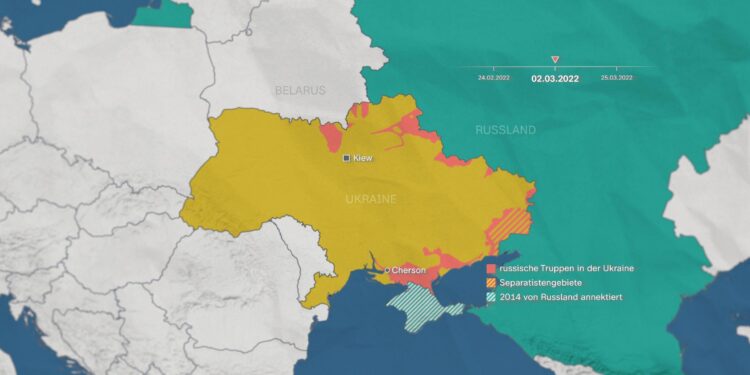Ukraine’s attack-migrant-groups-report/” title=”Surge in Racism Hits German City Following Deadly Christmas Market …, Migrant Groups Report”>recent attack on Russian bombers marks a significant development in the ongoing conflict between Kyiv and Moscow. As Ukrainian forces reportedly target key assets in Russia’s aerial arsenal, analysts and military experts are closely examining the potential ramifications for the balance of power on the battlefield. This article explores how Ukraine’s bold move might influence the trajectory of the war, impact Russian military capabilities, and shape the broader geopolitical landscape.
Impact of Ukraine’s Attack on Russian Bombers on Military Strategies
Ukraine’s strike on Russian bombers represents a significant tactical disruption that could redefine aerial dynamics in the ongoing conflict. By targeting these strategic assets, Kyiv not only hampers Moscow’s offensive capabilities but also forces a comprehensive reassessment of Russia’s air deployment and defense protocols. Analysts suggest that Moscow may increasingly rely on more covert or diversified aerial tactics, including the potential incorporation of unmanned drones or shifting focus toward long-range missile strikes to minimize exposure of manned aircraft.
Key military strategic shifts likely to emerge include:
- Heightened air defense measures along critical corridors to protect remaining aircraft
- Increased use of electronic warfare to disrupt targeting and navigation systems
- Greater emphasis on rapid repair and redeployment of damaged air fleets
- Adoption of decentralized command structures to ensure operational continuity
| Aspect | Pre-Attack Status | Post-Attack Adaptation |
|---|---|---|
| Bomber Deployment | Concentrated in key bases | Dispersed and camouflaged |
| Air Offensive Strategy | Direct bombing runs | Increased use of missile strikes |
| Bomber Deployment | Concentrated in key bases | Dispersed and camouflaged |
| Air Offensive Strategy | Direct bombing runs | Increased use of missile strikes |
| Command Structure | Centralized and hierarchical | Decentralized with autonomous units |
| Electronic Warfare | Limited use in aerial operations | Expanded deployment to disrupt targeting |
Assessing the Broader Implications for Air Superiority in the Conflict
The recent Ukrainian strike on Russian bombers marks a significant turning point in the contest for air supremacy within the region. By successfully targeting high-value aerial assets, Ukraine not only undermines Russia’s operational capabilities but also challenges the perceived invulnerability of its air force. This escalation forces both sides to reevaluate their aerial tactics, resource allocation, and risk management strategies in a conflict increasingly defined by technological precision and rapid adaptation.
Looking ahead, the broader implications hint at a shifting balance of power in the skies, with potential effects including:
- Increased emphasis on unmanned aerial systems (UAS): Both sides may accelerate deployment of drones to complement or replace manned aircraft under growing threat.
- Heightened electronic warfare and air defense innovations: Intensified efforts to neutralize enemy radar and missile systems could dominate future engagements.
- Operational reassessment of bomber roles: Strategic bombing might be curtailed or done with enhanced stealth and stand-off capabilities to mitigate losses.
| Aspect | Pre-Attack Status | Post-Attack Outlook |
|---|---|---|
| Bomber Deployment | Regular sorties in contested airspace | Reduced frequency, increased stealth tech investment |
| Air Defense Focus | Reactive missile defense systems | Proactive layered defenses and drone detection |
| Electronic Warfare | Limited use, mostly defensive measures | Expanded offensive and defensive EW capabilities to disrupt enemy systems |
| Focus Area | Recommended Action | Expected Outcome |
|---|---|---|
| Intelligence & ISR | Expand drone and satellite reconnaissance | Improved early warning & target acquisition |
| Air Defense | Deploy mobile missile systems & interceptors | Increased bomber attrition & mission disruption |
| Electronic Warfare | Enhance jamming and signal disruption | Reduced enemy communication efficacy |
| Civilian Preparedness | Inform & train local defense units | Higher resilience and reduced casualties |
The Conclusion
As Ukraine continues to target Russian bombers, the dynamics of the conflict are poised to shift, potentially altering both the strategic calculations and the broader trajectory of the war. Analysts will be closely monitoring Moscow’s response, as well as the implications for air power and ground operations on both sides. Ultimately, how this development influences the conflict will depend on the evolving military capabilities and political will of the actors involved, underscoring the complex and fluid nature of this ongoing war.
















